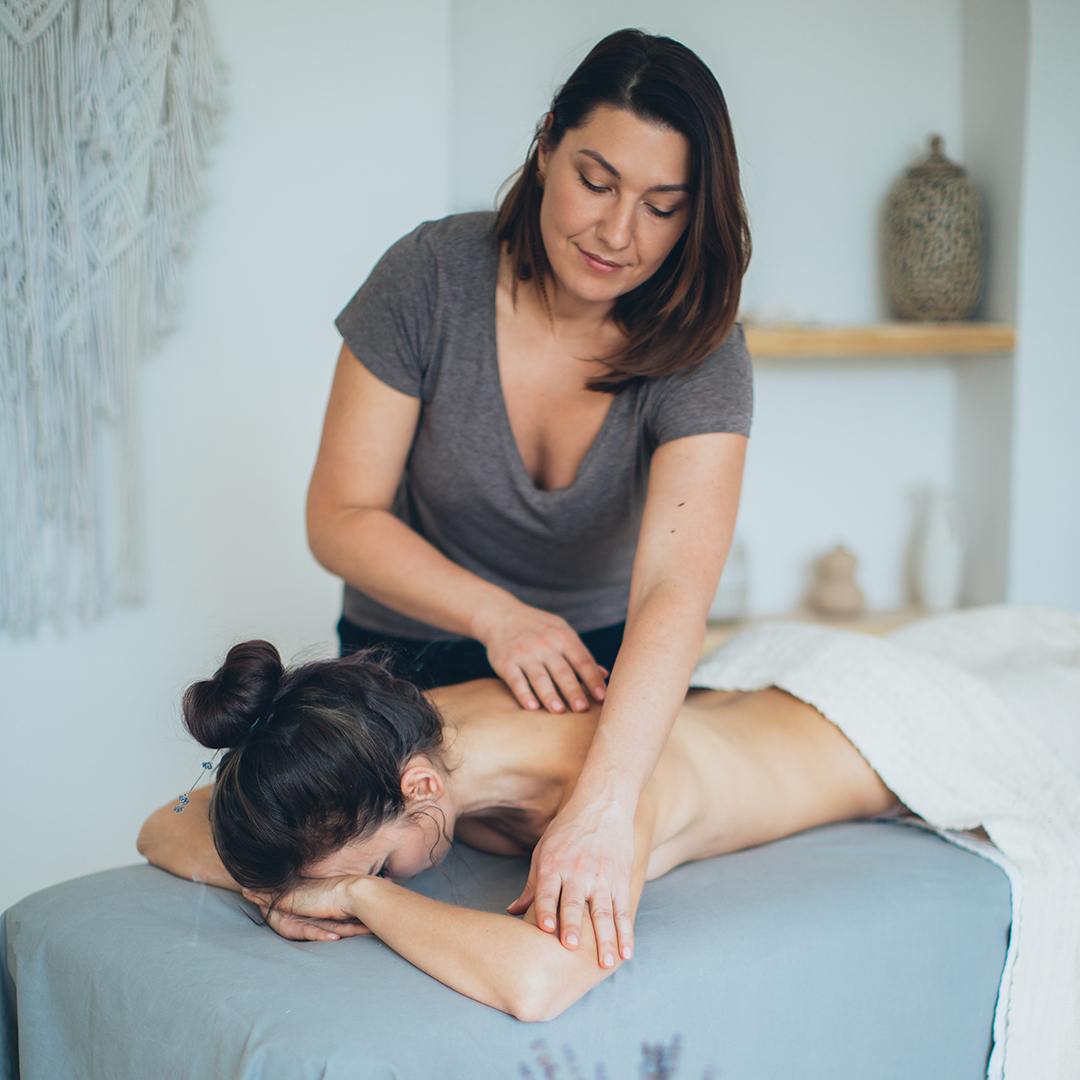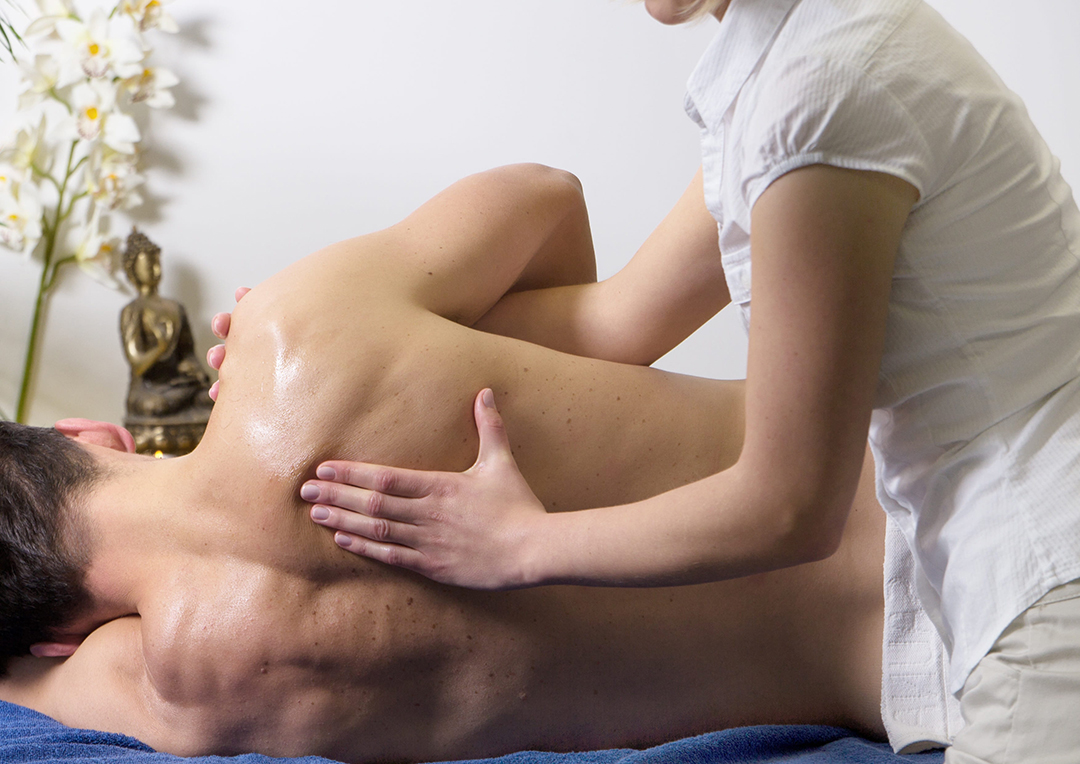Last month we introduced how massage therapy can help individuals who are drug dependent stay present in their bodies, rather than disassociating to the negative body outcomes of their substance of choice. We also discussed how massage therapy can break the cycle of stress and sleeplessness so common among the substance dependent, by encouraging deep relaxation and releasing serotonin, dopamine, and other feel-good hormones throughout the body. Those who abuse substances often rely on drugs to experience pleasure; massage, in contrast, helps people experience their bodies’ natural pleasure pathways. Today we’re continuing the conversation by taking a special look at how massage therapy can help those suffering opioid use disorders.

First, just what is an opioid? The National Institute on Drug Abuse provides a simple definition: “Opioids are medications that relieve pain.” By minimizing the strength of pain signals reaching the brain, opioids mimic the body’s natural pain control system.
Natural opioid peptides, such as enkephalins and endorphins suppress pain messages by binding to receptors in the spinal cord and brain. Opioid medications such as Vicodin, OxyContin, and Percocet use these same pathways to suppress pain signals. Some opioids, like Morphine, are used in surgery and other circumstances that require extreme pain relief. Other opioids, such as codeine, are commonly prescribed for mild pain.
Historically, poppy seed resin was the original opiate. Drugs derived from the poppy seed, such as opium and heroin, have been used for thousands of years for both pleasure and medicinal purposes.
Why are opioids so addictive? In essence, because they replace the body’s natural pleasure chemicals. Once the body detects a consistent flow of synthetic endorphins, it stops producing its own pleasure chemicals. Then, when the individual tries to stop opioids use, depression ensues until the body begins producing its own pleasure chemicals once again. In the meantime, withdrawal symptoms are often so severe as to send the individual running back to their opioid “quick fix” for feeling good.
Opioid Addiction: A Modern Epidemic
According to the Centers for Disease Control and Prevention (CDC), at least half of all drug overdose fatalities involve prescription opioids. In the past 17 years, the number of overdose deaths involving opioids has quadrupled. Every day, 78 Americans die of an opioid overdose.
The American Academy of Pain Medicine has determined that opioid addiction costs the U.S. $55.7 billion, in costs related to loss of workplace productivity, criminal justice prosecution, health care, and correctional facility operation.
Clearly, opioid misuse is taking a heavy toll in our country. Traditionally, opioid dependence has been treated with other drugs, such as methadone. The idea is that other medications are required to help assuage withdrawal symptoms. However, some patients feel replacing one drug with another is counterproductive. Others rely on a combination of traditional and alternative medicines to combat their opioid overuse. Twelve-step programs, acupuncture, Chinese medicine, and massage can be helpful tools in the opioid recovery toolbox.
How Massage Helps with Opiate Use Disorders
Portland massage therapists may choose to specialize in the treatment of substance addicted or dependent individuals. (For more details on how to steer careers in massage therapy toward helping this niche group, we recommend reading our introductory post from May.) Opioid-dependent patients who receive massage therapy may experience the following positive outcomes:
- Increased Body Awareness. Opioid use is often rooted in chronic pain. The opioid user attempts to avoid pain through painkiller medications. Adept massage therapists can help patients feel what the pain is actually like in their bodies. While this may at first be very difficult, over time those with opioid use disorders find the pain isn’t their whole world. They eventually discover that they can live with their pain without requiring outside substances.
- Effective Pain Treatment. A May 2016 study published in the journal Pain Medicine found that massage therapy can reduce pain, minimize anxiety, and improve health-related quality of life. All three outcomes are relevant for those with substance dependency issues. By providing a drug-free way to relieve pain, massage can help tremendously.
- Manage Detox Symptoms. Withdrawal symptoms can be intense— extremely painful, stressful, and uncomfortable. Massage can help by increasing the levels of natural feel-good chemicals in the brain. For instance, a good massage increases dopamine levels, the body’s reward chemicals. By increasing these pleasure chemicals, regular massage can help addicts withstand withdrawal symptoms.
If helping combat rampant opioid misuse appeals to you, we suggest keeping your eyes peeled for relevant massage therapy continuing education courses. In Portland, you can rely on East West College to offer a range of classes each quarter. This September and October, we are offering twenty-two different CE courses for LMTs, ranging from “Indian Head Massage” to “Ethics for Massage Therapists” to “Gua Sha and Cupping”. Massage therapists with an interest in substance abuse treatment may also seek volunteer work and employment in clinics that specialize in recovery. If you are an East West College grad, our Alumni Services team would be happy to help you with information on job openings and volunteer opportunities. To learn more, get in touch.



